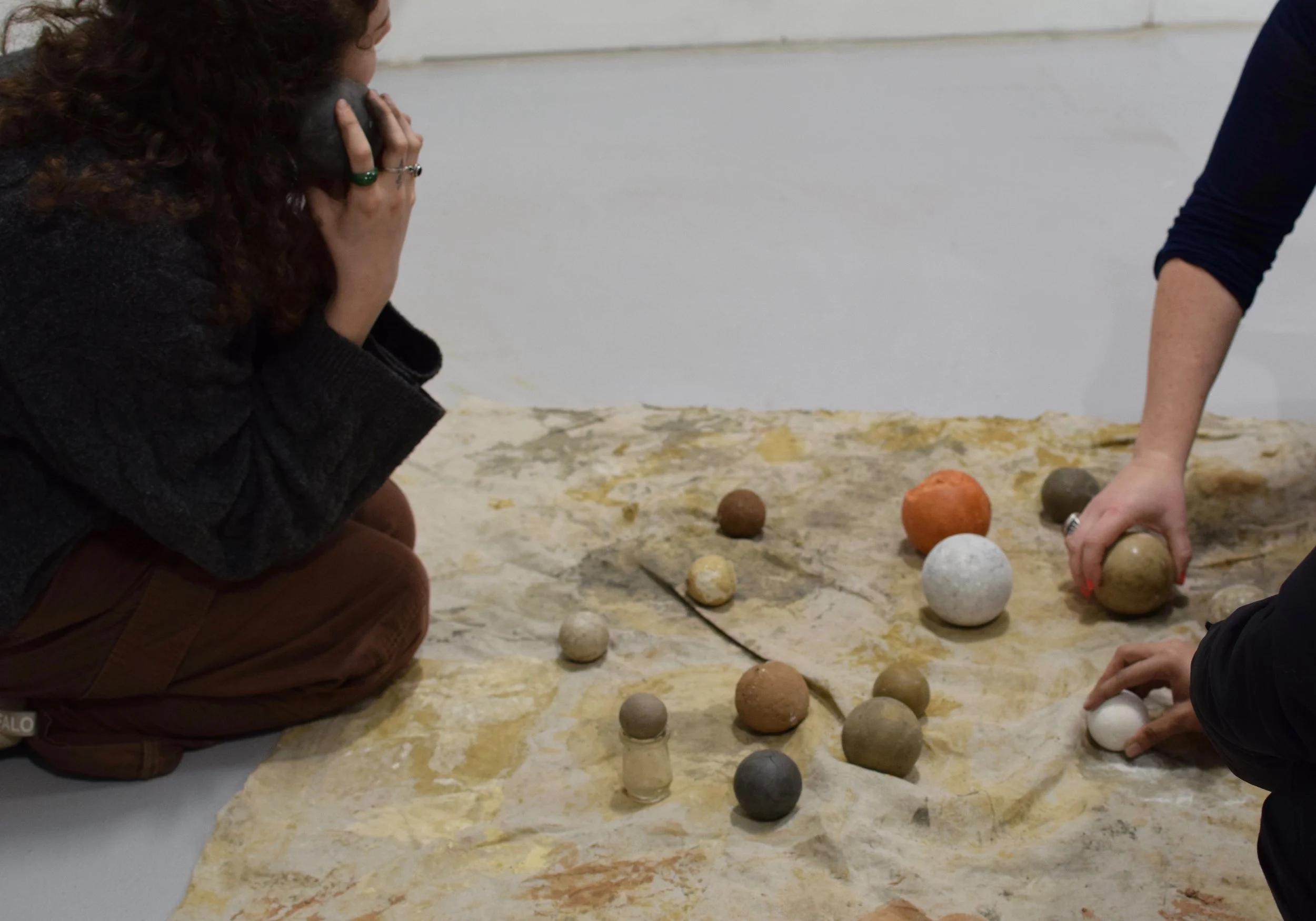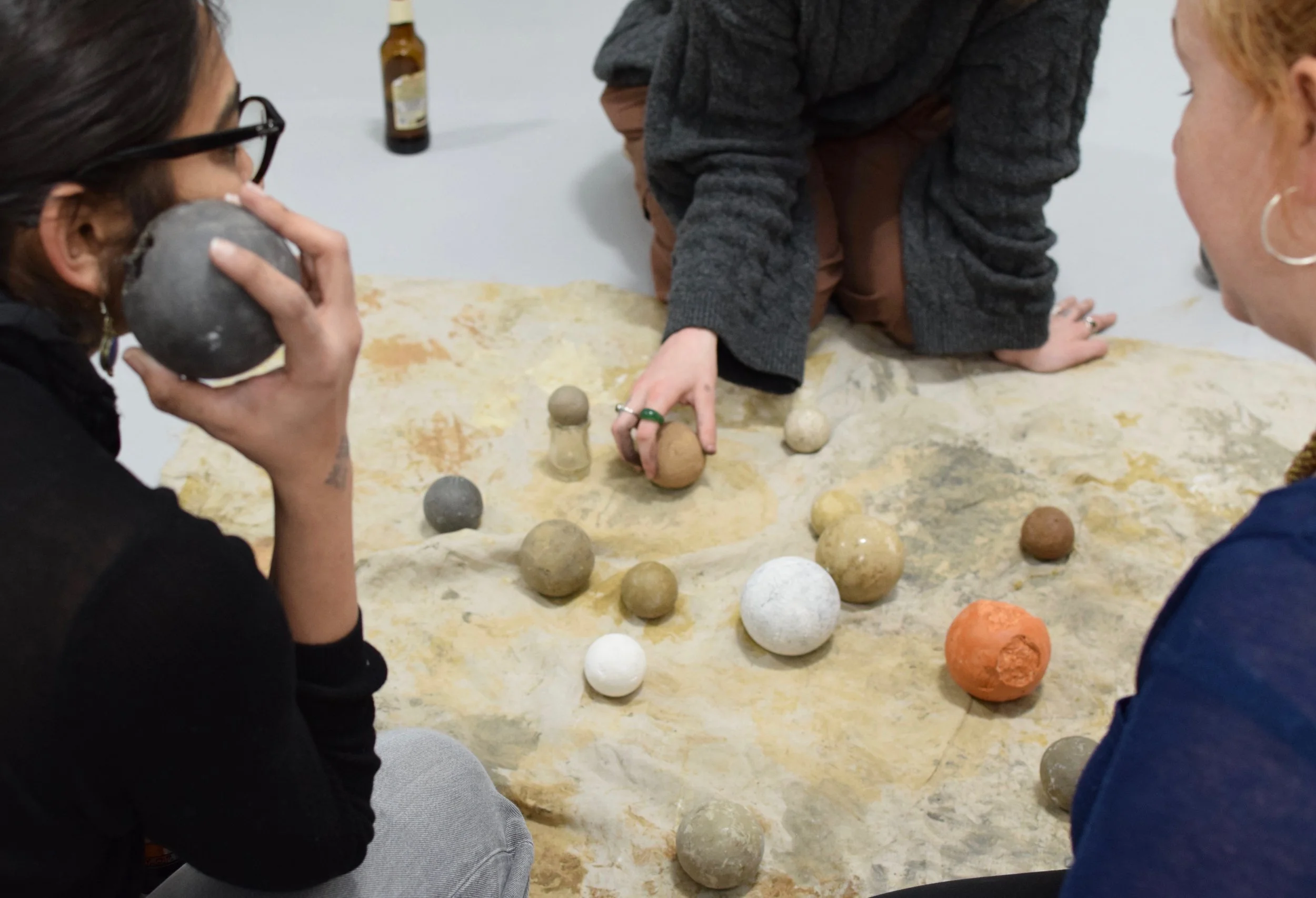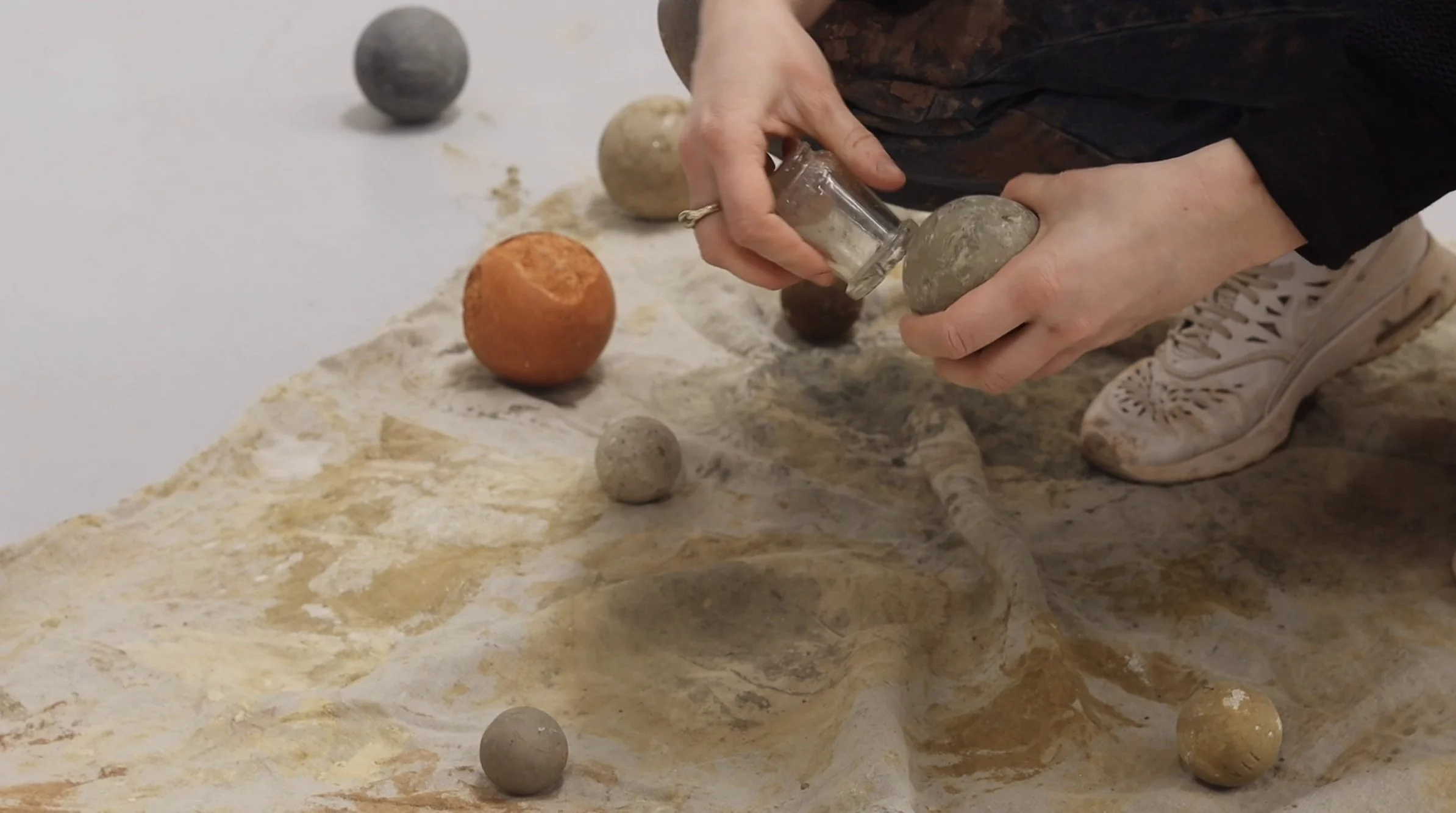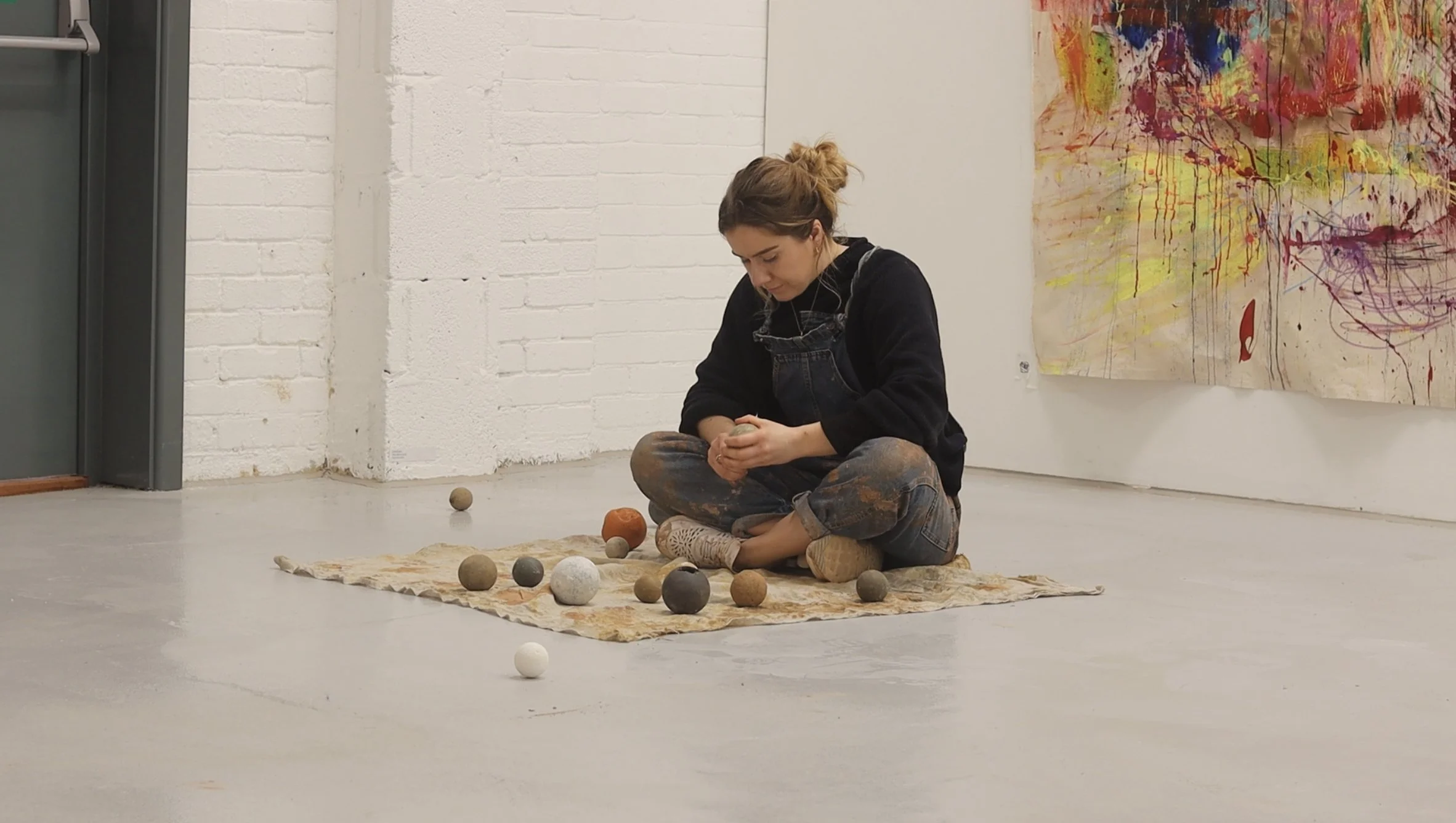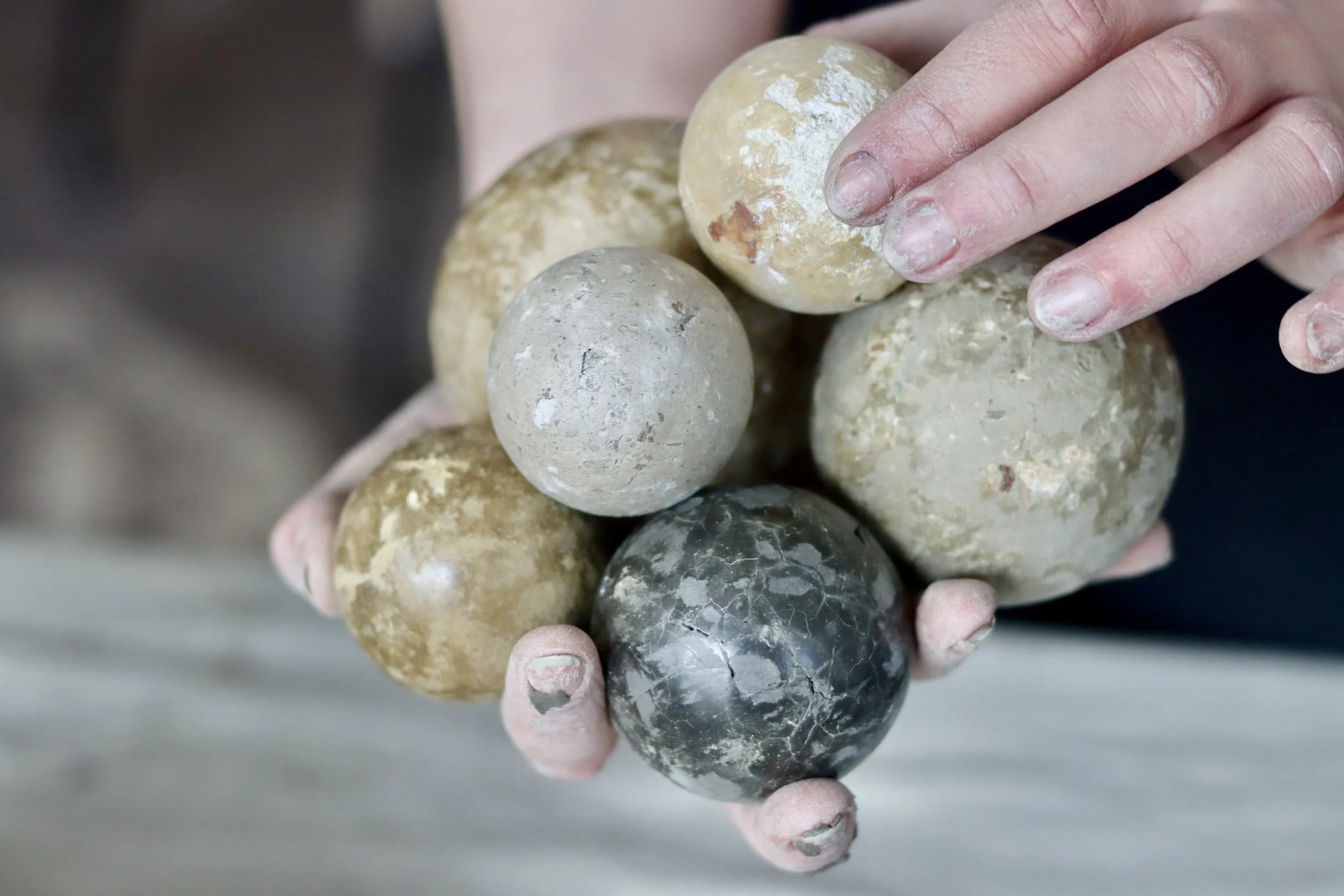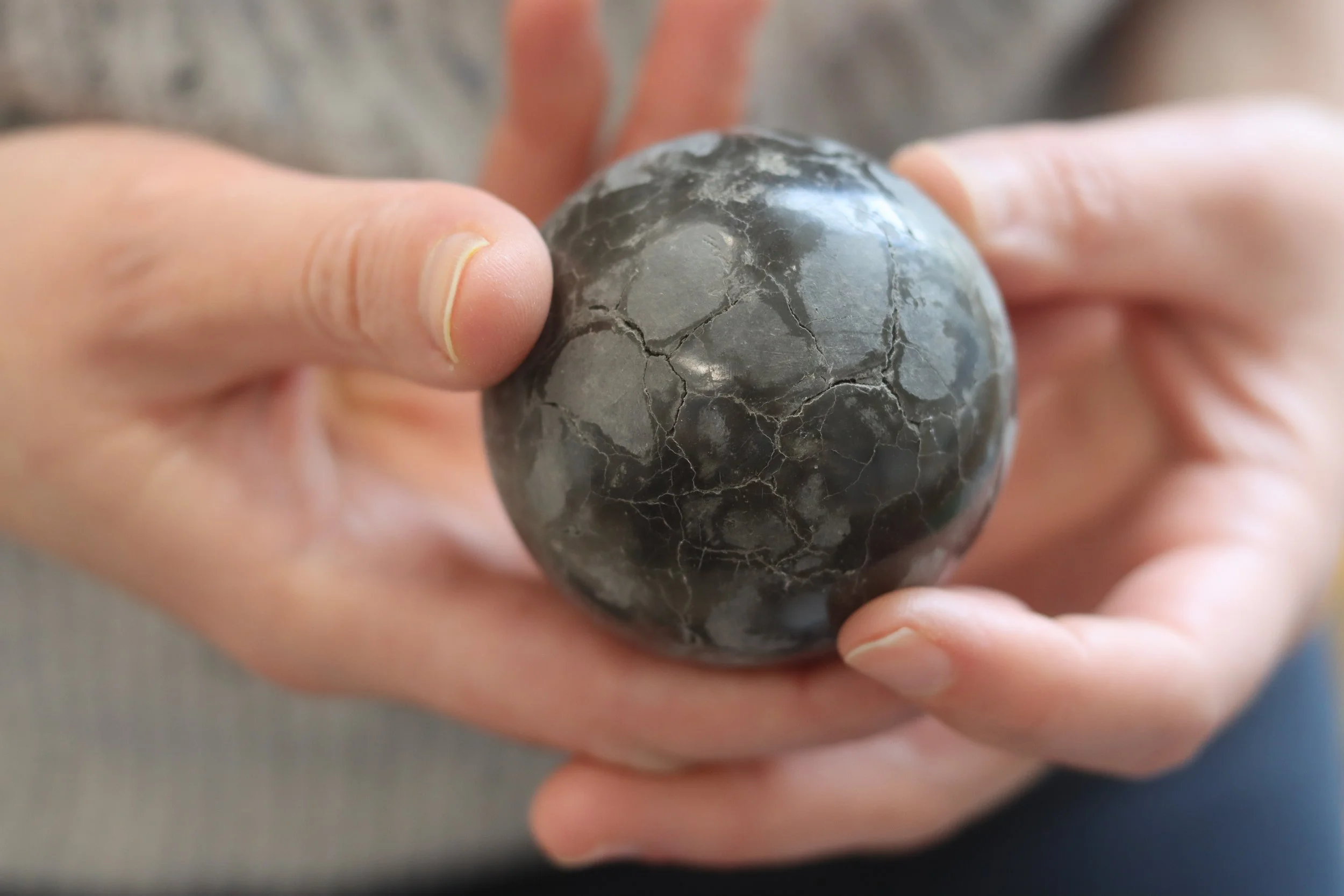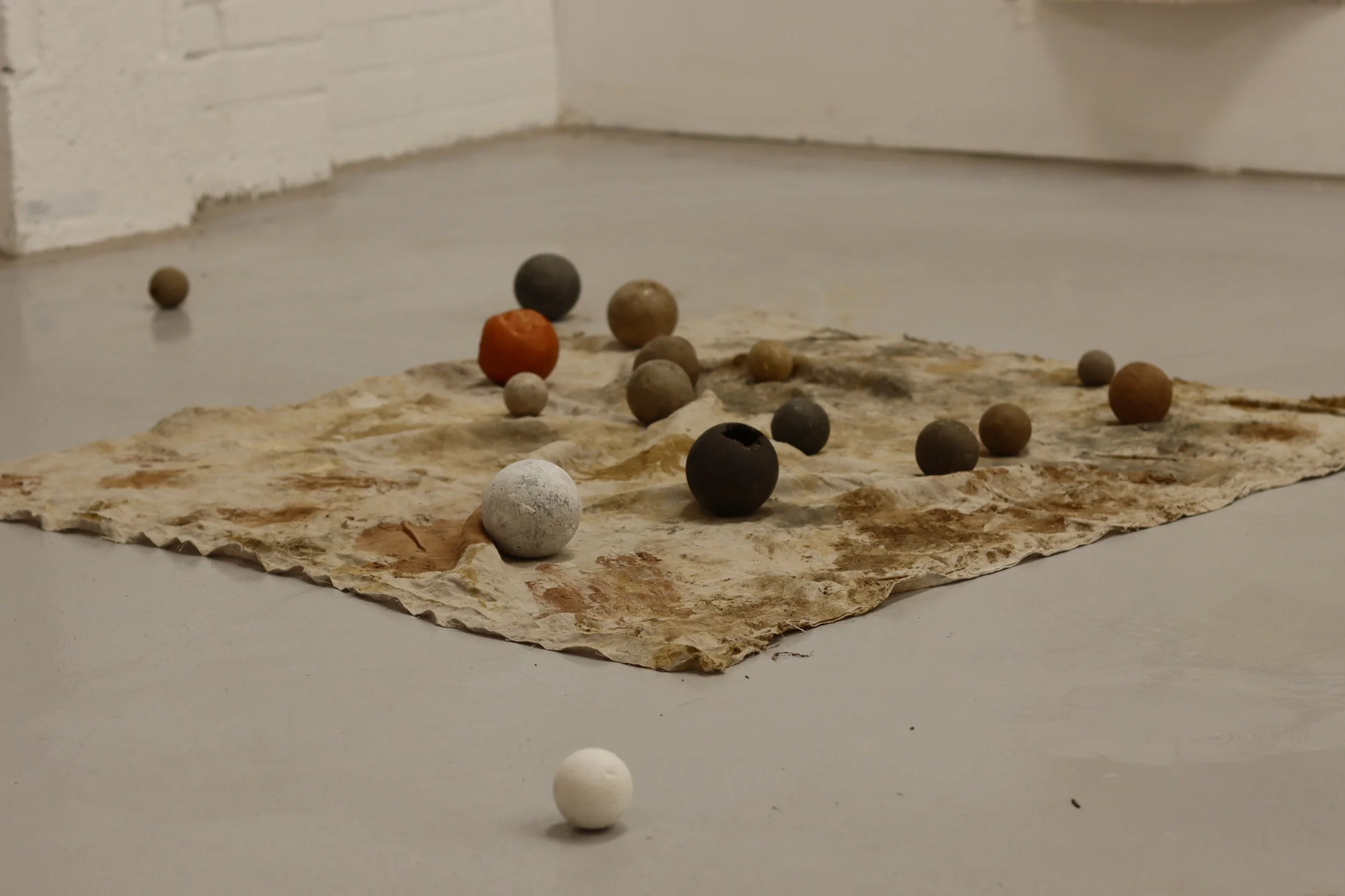TESTING GROUND
An interactive installation exploring material agency, gesture, and the politics of touch.
The title Testing Ground speaks to multiple layers of the work. It references the physical ground, soil, dust, pigment, but also the conceptual ground of experimentation, the space in which relationships between artist, audience, and material are actively tested and redefined. It is a place where gestures are not only allowed but encouraged, where the object is not fixed, but responsive.
As a neurodivergent artist, tactility and material closeness are central to how I think and make. This project foregrounded those instincts, working with no tools, only the body and raw matter. The performance of making became an intimate, quiet offering. By handing over the objects, I invited the audience into that same relationship, asking: how do we care for what we are given? What does it mean to hold something made from the earth, shaped by someone else’s hands?
Testing Ground also questioned the terms of exhibition itself. What are the expectations when an object is placed in a gallery? Can play be productive? Can art be unstable and still be understood as complete? Through this process, I began to think of the installation as a living ecology, shaped by each person who touched it, moved it, or left it unchanged.
In removing barriers to engagement, the work sought to encourage inclusive, spontaneous interaction and a deeper sensitivity to material. The dorodango balls, some smooth and shiny, others rough, cracked, or fragile, embodied the natural inconsistencies and shifts of the earth. Each one held a story of handling, weather, and choice.
Testing Ground is part of an evolving enquiry in my practice into how material, place, and people can be brought into conversation, not through static presentation, but through shared physical experience. It sits at the intersection of sculpture, performance, and social practice, holding space for interaction, slowness, and
Testing Ground is a participatory installation and performance using dorodango balls - highly tactile spheres made from earth - as a way to explore material presence, embodied play, and the relational possibilities of clay. Developed during the Doing Together Symposium and Bath Spa University, the work marked a point of departure in my practice, allowing me to question what it means to present raw, unfixed material processes within a gallery space, and how that space can become a site of non-judgemental interaction.
The work began with a performance: seated on the floor, I shaped the first dorodango balls slowly by hand using gathered clay, earth pigments, and water. This meditative act of forming was not separate from the installation but part of its unfolding. As the performance ended, I left the objects in place, resting on a piece of naturally dyed cloth, and invited the audience to engage freely. No signage or instruction guided them, only the visual and material presence of the spheres.
I was curious about what it means to present “a part of the earth” to the audience, not as symbol or metaphor, but as substance. What responses are evoked when the viewer is offered a tactile invitation, rather than a directive? How does physical proximity to raw materials shift the way we connect, behave, and move within a space?
Throughout the exhibition, I observed the audience's responses. Some hesitated, unsure if they were allowed to touch. Others knelt, rolled, grouped, or gently rearranged the balls. A few began to draw lines across the mat using the spheres, tracing spontaneous paths through dust and pigment. These interactions became their own choreography - unscripted, fleeting, and collaborative. The gallery floor became a site of play, negotiation, and quiet exchange.
Observations and listenings :
Playing with the balls
A dance
A performance
A collaboration
A way to form connection
What is play?
Do we make it up, or are we taught it?
Can you hear the sea?
What’s that noise?
Or is that solely reserved for shells
that have somehow caught their origins
in their absent bellies?
What noise sits inside the epicentre
of a ball that has been constructed by hand?
What documentation of sound do they hold?
They felt the roll of the balls in my hands.
This one is smooth and shiny.
Others, rough and broken.
I watched them play and understood
the work: balls, on a mat —
a testament to proximity.
Each other, a testament to relationally.
Some draw with the balls.
Some are shy to touch.
The name is everything.
Without it, no one would play
with the balls.
